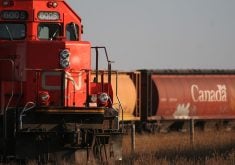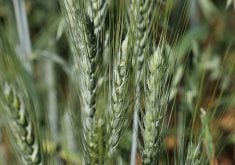Dairy automation | It started with milking, then manure, now feeding
WOODSTOCK, Ont. — Robotics and milking go hand in hand. Even sweeping the feed back into the bunk doesn’t need a human touch anymore.
Getting people out of the barn deals with labour issues on dairy farms, but it also adds a level of precision and dependability that makes operations more efficient and ultimately more profitable, says Mark Futcher of DeLaval, who attended Canada’s Outdoor Farm Show in Woodstock, Ont., last week.
Robots in the dairy parlour have been around for a while and manure bots have been around for a few seasons. However, the role of feeding automation is now starting to gain acceptance.
Read Also

Europe holds promise for Canadian lentils
Pulse Canada is trying to help boost lentil consumption in Europe, which is already the fourth largest market.
“These are part of a natural progression of robotics on the farm,” Futcher said.
Optifeeding, which is the company’s line of high-tech feeding systems, is designed to automate feed mixing and delivery in the barn.
The system, like the voluntary milking robot, allows cows access to feed around the clock, should producers set it up that way.
The system can both mix and deliver feed to the cows with limited intervention.
It begins with an automated feed mixer, which is the only part that might need to be manually fed by a human. The unit mixes feed and, using a conveyor, fills a rail-suspended feed wagon when demanded by the computer interface that runs the system.
The feed wagon moves through the barn, delivering pre-set amounts of feed to the cows.
The system can also be set up with grain bins and nutrient carts feeding the mixer with augers, as well as silage or forage bunks loading the feed with conveyors.
Cows are the only wild card. They tend to pick out the tastiest parts first when feed is placed in front of them and nose away the rest.
A person still needs to walk along with a broom and shovel and push the passed over feed back to the rail so that cows can eat it later.
However, DeLaval has debuted a robotic solution in Ontario: the FP200 feed pusher.
A small, rail mounted, rope driven plow blade is attached to the feed bunk’s curb and, on a schedule, runs safely back and forth along the bunk pushing feed back to where the cows will find it later.
“Overall, animals improve their dry matter intake and it reduces animal stress. They eat more and yield more milk. For the farmer it means reduced feed losses and lower labour costs,” Futcher said.
“Dairy farmers are choosing (automation) for more than that, though. It is also about being able to take to time to better manage their other farm activities. And have an im-proved lifestyle.”















